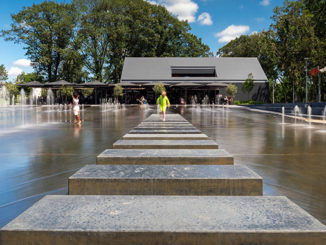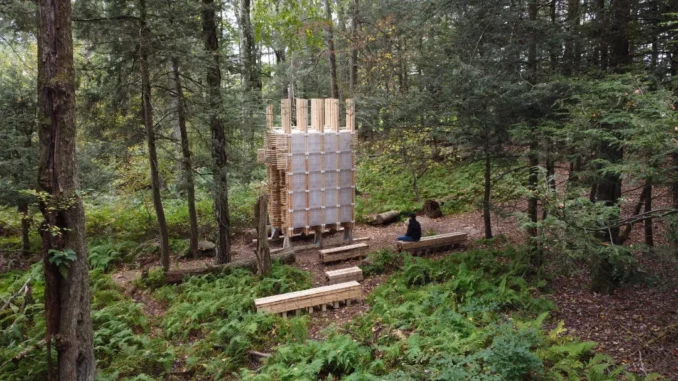
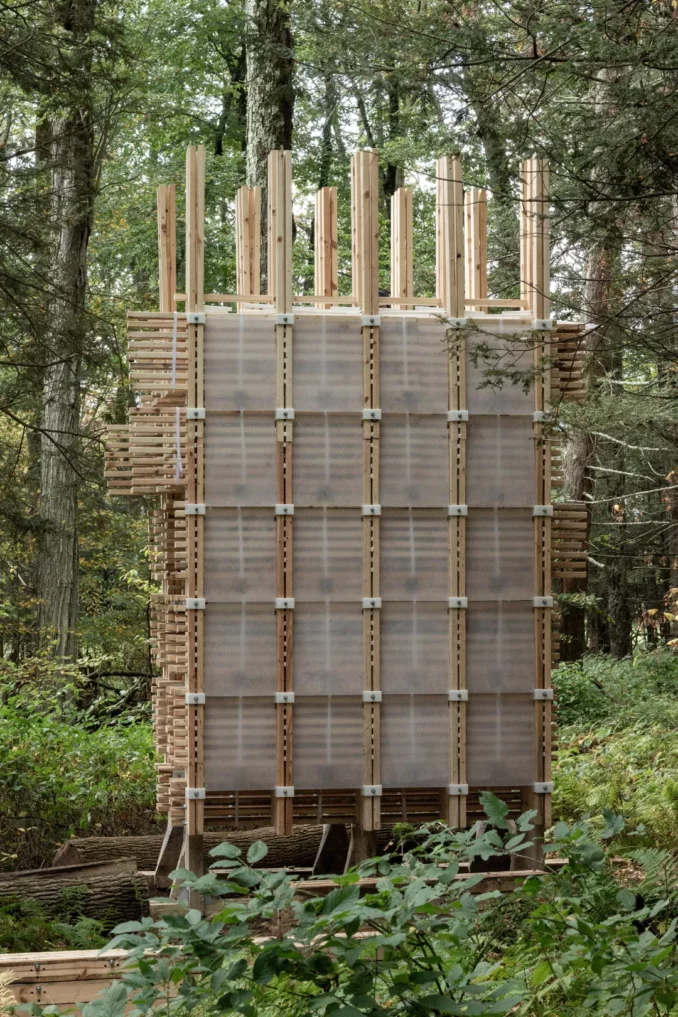
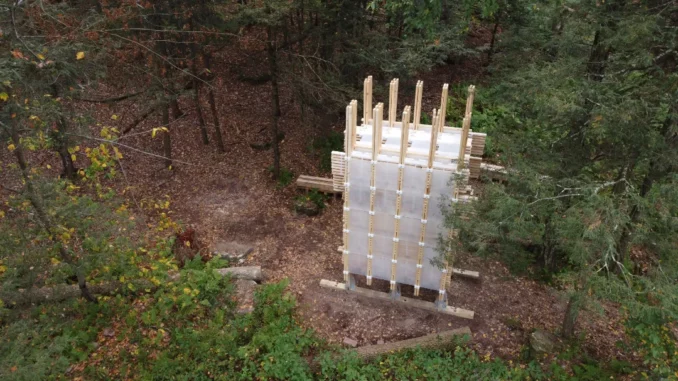
Once a pavilion or building reaches the end of its lifespan, the ideal scenario is to recycle each material properly. However, this isn’t always possible for most architectural materials because of their complex nature. They often involve significant modifications (cuts, notches, etc.) and irreversible connections (nails, glues, adhesives, etc.), which make it challenging to recycle them. WoodStack is a project that challenges the idea of permanence in building construction and questions our perception of material value. It blurs the lines between a stack of lumber, a material depot, and a structure.
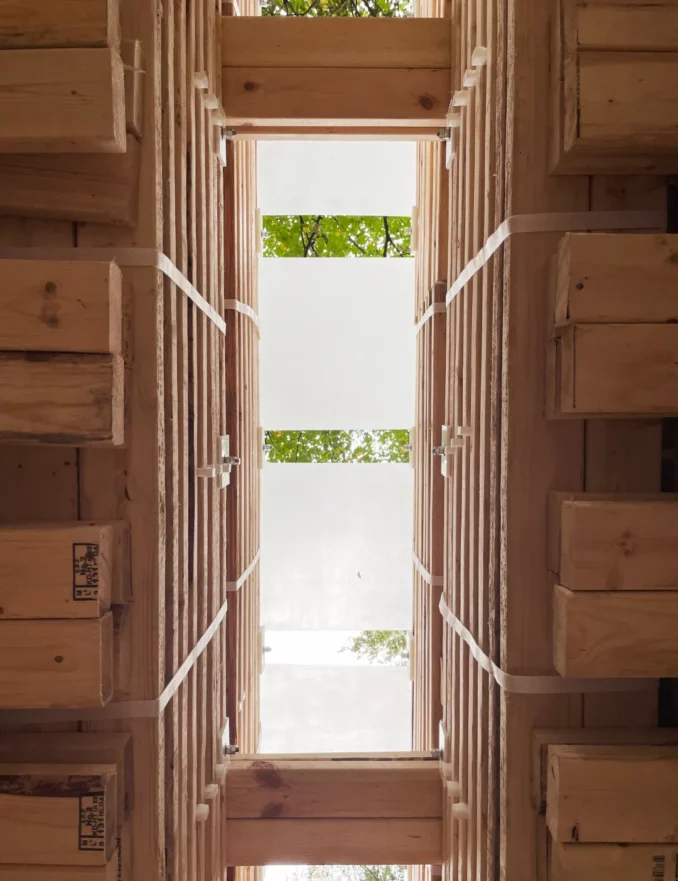
Working with standard dimensional lumber, the project’s exterior appearance resembles monolithic stacks of material commonly found throughout the lumber industry. Just as the lumber yard is a temporary resting ground for materials before they move to their next destination, WoodStack’s design and construction techniques embrace a similar model of temporary existence as an architectural pavilion, while allowing its materials to be easily disassembled and reused in another lifecycle.
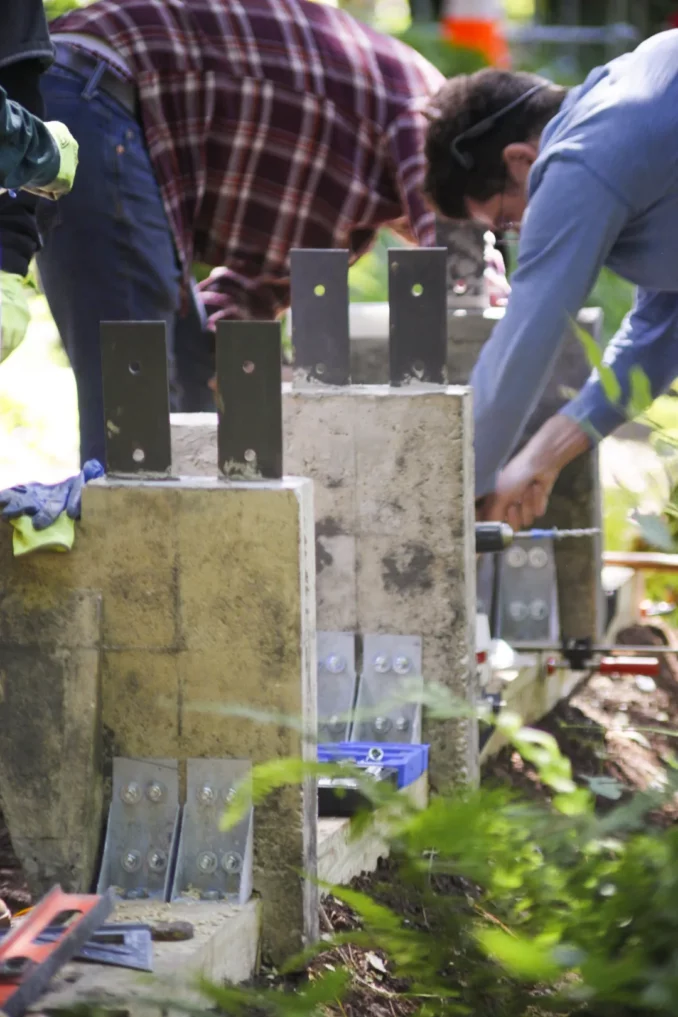
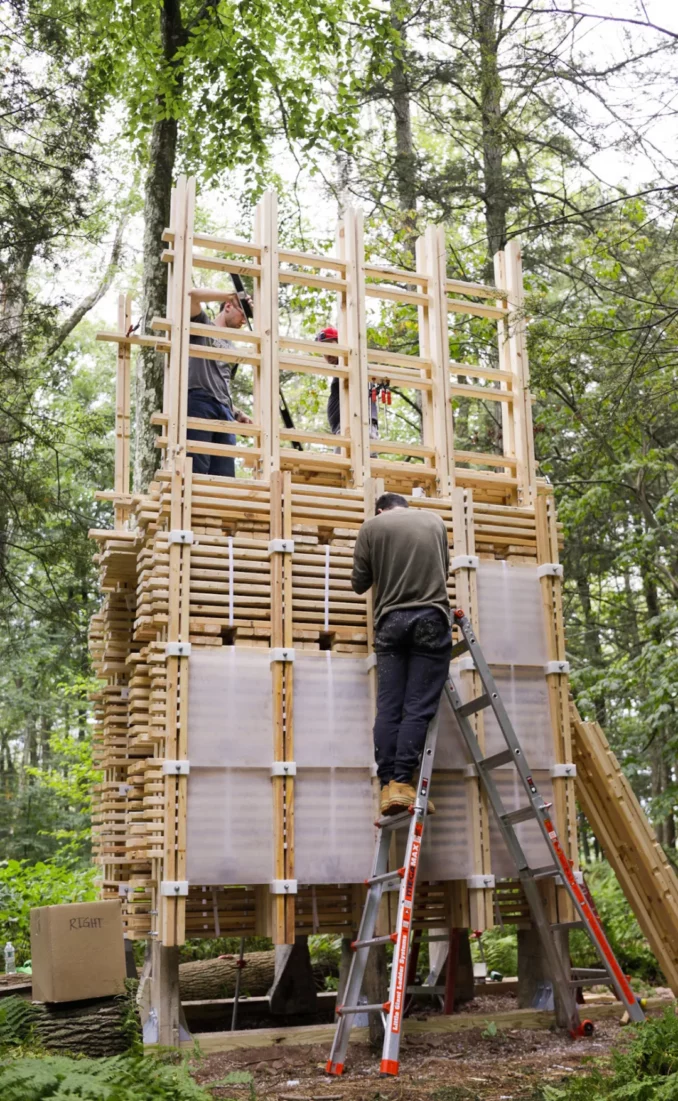
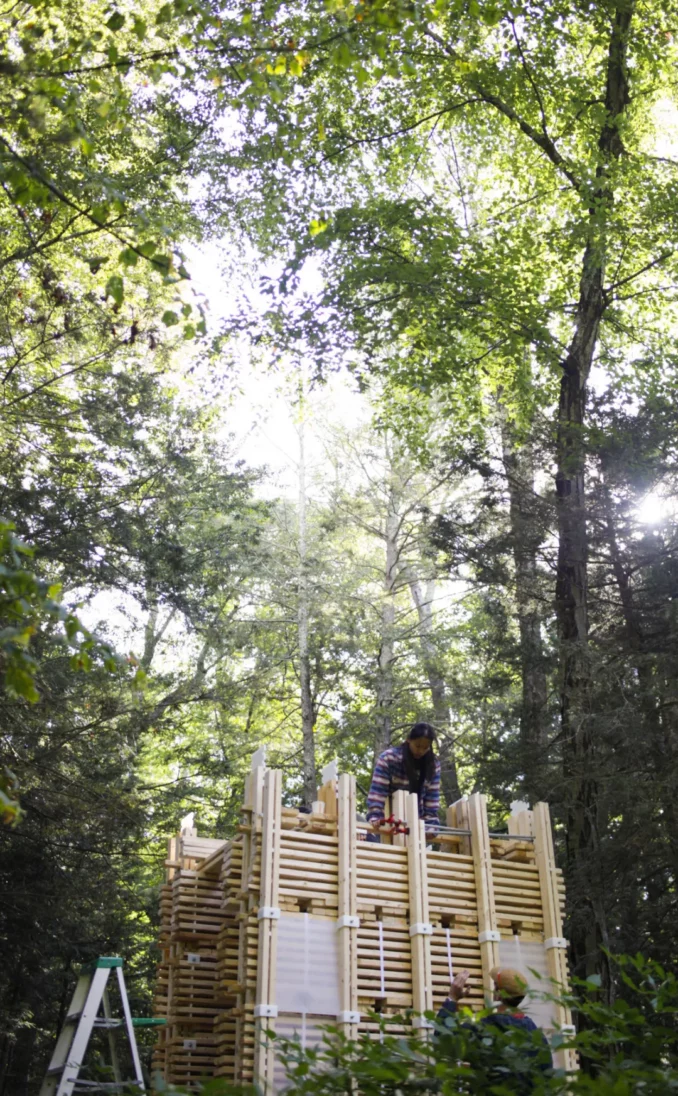
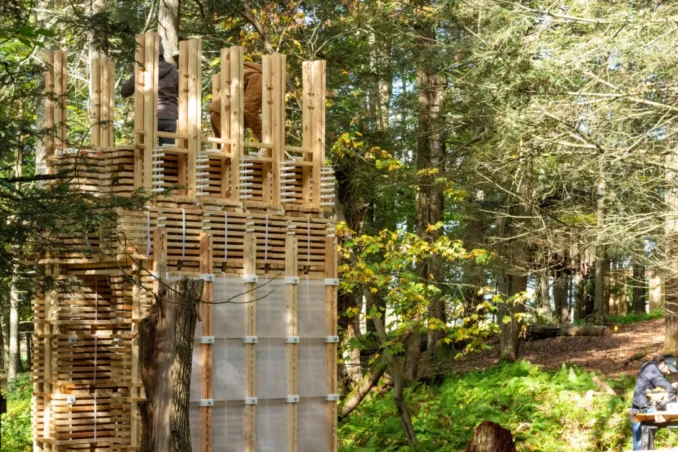
The project comprises two parallel stacks of lumber that form an interior space for occupants to pause and contemplate whether each stack constitutes a shelf for the collection of materials or a wall assembly. To preserve each member of the pavilion, a series of concrete footings lift the project off the ground to protect it from moisture, while weather-resistant cladding is applied to protect both occupant and material. At the top of the pavilion, WoodStack is purposely left unfinished, implying that it exists in a constant state of flux, with materials being added and removed as needed for other projects.
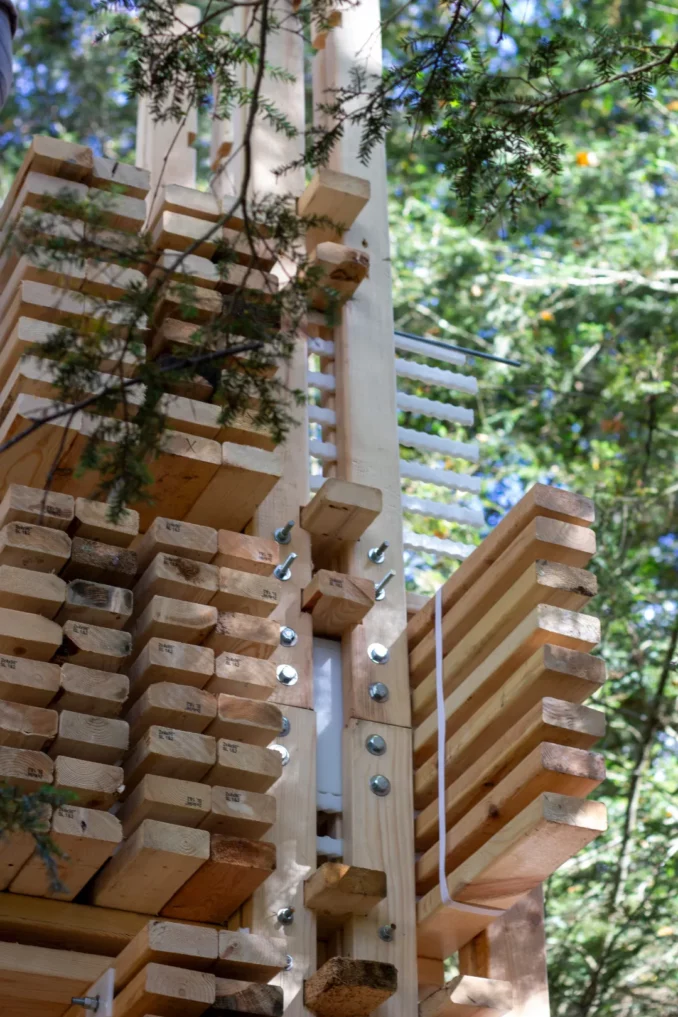

WoodStack
Location: Bethel, United States
Designer: Office of Dillon Pranger (ODP)
Image Credit: Office of Dillon Pranger (ODP)



